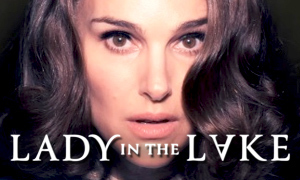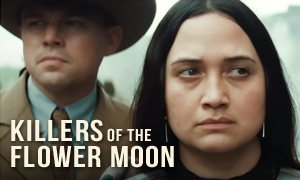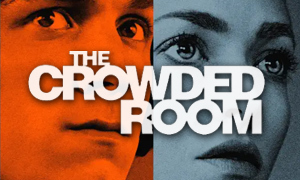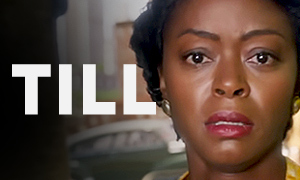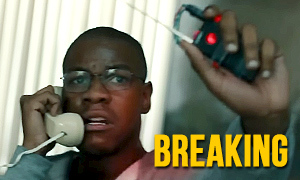Dr. Death: History vs. Hollywood
Joshua Jackson
Born: June 11, 1978
Birthplace:
Vancouver, British Columbia, Canada
Dr. Christopher Duntsch
Born: April 3, 1971
Birthplace: Bozeman, Montana, USA
Alec Baldwin
Born: April 3, 1958
Birthplace:
Massapequa, Long Island, New York, USA
Dr. Robert Henderson
Birthplace: USA
Bio: Spine Surgeon
Christian Slater
Born: August 18, 1969
Birthplace:
New York City, New York, USA
Dr. Randall Kirby
Born: August 12, 1962
Birthplace: Dallas, Texas, USA
Bio: Vascular Surgeon
AnnaSophia Robb
Born: December 8, 1993
Birthplace:
Denver, Colorado, USA
Michelle Shughart
Born: March 3, 1982
Birthplace: Dallas, Texas, USA
Bio: Assistant District Attorney Dallas County
Molly Griggs
Born: 1985
Birthplace:
Georgia, USA
Wendy Young
Born: abt 1984
Birthplace: Dallas, Texas, USA
Bio: Christopher Duntsch's Girlfriend
Hubert Point-Du Jour
Birthplace:
USA
Kyle Kissinger
Born: abt 1979
Birthplace: USA
Bio: OR Nurse
Renamed Josh Baker in the Series
How many people did Dr. Christopher Duntsch hurt?
The Dr. Death true story reveals that neurosurgeon Dr. Christopher Duntsch injured 33 out of 38 patients that he saw over a span of less than two years. Two of his patients died as the direct result of his actions in the operating room. Another was rendered a quadriplegic and died a decade later from a related infection. Others were maimed for life and continue to suffer to this day. The stories of several of Dr. Death's victims are chronicled in the Peacock TV series, which was based on the Wondery podcast. In some cases, their names were changed for the show.
Had Christopher Duntsch dreamed of being a college football star?
Yes. Despite only being a mediocre athlete, Duntsch tried to push himself harder than his teammates to make up for what he lacked in talent, à la Rudy Ruettiger. After high school, he attended Division III Millsaps College in Mississippi on financial aid. In an attempt to fulfill his dream of playing for a Division I school, he left Millsaps his sophomore year when he made the Colorado State football team as a walk-on linebacker. Fellow Colorado State linebacker Chris Dozois recalled watching Duntsch struggle through basic drills, pleading with the coaches to run them again until he got them right. "He'd go through; he'd screw it up again," said Dozois.
Homesick and unable to succeed on the field at Colorado State, Duntsch transferred to Memphis State University (subsequently renamed the University of Memphis). He wanted to play football there but he was no longer eligible due to his multiple transfers. It was then that he set his sights on becoming a doctor. -ProPublica
How did Dr. Christopher Duntsch graduate medical school?
A Dr. Death fact-check reveals that the real Christopher Duntsch received his undergraduate degree in 1995 from Memphis State University. He then attended the University of Tennessee at Memphis College of Medicine. He was enrolled in a challenging program that had him on track to earn both an M.D. and a Ph.D. in 2001 and 2002. He then embarked on his neurosurgical residency at the school. During his residency, he participated in less than 100 surgeries, a far cry from the average 1,000 operations that most neurosurgery residents take part in. Duntsch also participated in a year-long spine fellowship at the Semmes Murphey Clinic. -ProPublica
Some things on his CV don't exactly add up. He claimed that he earned a doctorate in microbiology from the renowned St. Jude Children's Research Hospital and graduated summa cum laude. The only problem is that St. Jude said that such a program didn't exist at the hospital when Duntsch claimed to have attended. -D Magazine
The doctors in charge of Duntsch's residency program said that there were no failures in his residency training or his fellowship. They claimed that they had never observed any surgical issues with Duntsch. The doctor who headed the university's neurosurgery department at the time of his residency would not respond to the American Greed TV show's multiple email requests for comment. However, there is no record of issues with Duntsch's procedures during his time training in Tennessee.
Did Christopher Duntsch start a biotech company?
Yes. After completing his medical training, he showed more interest in the Ph.D. side of his dual M.D./Ph.D. degree. His name appeared on multiple research papers, patents, and biotech startups. Along with two Russian scientists, husband-and-wife Valery Kukekov and Tatyana Ignatova, he launched a company called DiscGenics in 2008 after Kukekov developed a method to obtain and grow disk stem cells. Duntsch focused on raising money while Kukekov and Ignatova worked in the labs. While Duntsch did secure local neurosurgeons as investors, Kukekov and Ignatova said that Duntsch tried to take more credit than he deserved for the technology that they developed. "It was the invention of me and my wife, because we made all primary experiments. We discovered it." -D Magazine
Despite his early success, Duntsch was eventually forced out of the company, and his investors and partners sued him over stock and money. He was in debt and knew that working as a neurosurgeon would be the easiest way to have the life of excess that he desired. -ProPublica
Where did Christopher Duntsch meet his girlfriend, Wendy Young?
Duntsch, then 40, met Wendy Renee Young, then 27, at a bar and restaurant in Memphis called the Beauty Shop (it took its theme from the fact that it had formerly been a salon owned by the ex-wife of Elvis Presley). At the time, Young had been working as a dancer at a strip club. They moved in together after less than three months of dating and had two children, Preston and Aiden. While things were good in the beginning, Duntsch's eventual cheating and lies contributed to their breakup. Young is portrayed by Molly Griggs in the series. -D Magazine
How much was Dr. Christopher Duntsch earning when he started working as a surgeon?
Duntsch applied for neurosurgery positions in various major cities and decided on Dallas, the hometown of his girlfriend, Wendy Young. His impressive 12-page resume landed him a position as a surgeon at the Minimally Invasive Spine Institute in North Dallas. It wasn't long before he requested operating privileges at Baylor Regional Medical Center at Plano. Duntsch, then 40, had been nearly $500,000 in debt. This included $131,006 in student loans, a $127,525 home loan, and $220,000 worth of debt he owed his father. His initial salary as a surgeon was $600,000 a year, plus bonuses (40% of any revenue over $800,000 that he earned the hospital each year). He viewed being a surgeon as a way to quickly amass wealth. -American Greed
Is Dr. Duntsch's former co-worker, Kim Morgan, based on a real person?
Yes. The Dr. Death true story confirms that Christopher Duntsch hired the real-life Kimberly Morgan while he was working at the Minimally Invasive Spine Institute in 2011, which was his first job as a surgeon. As indicated in the series, Morgan was his medical assistant. Her official title in the Morguloff Complaint lists her as an APN (advanced practice nurse). She also helped him create his practice, the Texas Neurosurgical Institute, and she stayed with him when he left the Spine Institute and worked solely at Baylor Regional Medical Center at Plano. The two began an intimate relationship roughly two months after they started working together. Their moments of passion were largely confined to Duntsch's office at Baylor-Plano. He told Morgan that his girlfriend, Wendy Young, was actually just his secretary and friend. By that point, Young had given birth to their son, Aiden. -D Magazine
Was Dr. Christopher Duntsch equally cocky in real life?
Yes. Emails reveal Duntsch describing himself as "a supernova sophisticated savant" and "the best f***ing surgeon and scientist and every f***ing thing I decide I want to be." He stated he arrived in Dallas to "do my thing, build my empire, party and ***k with models without knowing their names, to make money."
His self-worship was on full display again in a 2011 email. "Anyone close to me thinks that I likely am something between God, Einstein, and the antichrist. Because how can I do anything I want and cross every discipline boundary like it's a playground and never ever lose. What I am being is what I am, one of a kind, a mother******* stone-cold killer that can buy or own or steal or ruin or build whatever he wants." -American Greed
Did Dr. Christopher Duntsch operate while under the influence of cocaine?
It is suspected that the real Christopher Duntsch was under the influence of cocaine while he operated during the fourth year of his six-year residency and fellowship at the University of Tennessee College of Medicine. In the 2014 testimony of best friend Jerry Summer's ex-girlfriend, Megan Kane, she said that on Duntsch's birthday in either 2006 or 2007, they had spent the whole night celebrating with LSD, alcohol, and cocaine. She witnessed him use cocaine both at night and in the morning before he left for rounds at the hospital.
During his residency in 2006, the hospital received an anonymous phone call claiming that Duntsch liked to do drugs prior to operating. Hospital administration sent him down to employee health to get his urine checked. He told them he couldn't pee then and would return in an hour. Instead, he disappeared for a few days. Upon returning, he was required to attend the impaired physicians group. He was permitted to finish his residency but was not allowed to operate on his own (D Magazine).
Duntsch continued to abuse illicit and prescription drugs (Oxycontin, Xanax, Lortab, etc.), as well as alcohol, during his time working for Baylor Regional Medical Center at Plano. The Morguloff Complaint states that Duntsch's pattern seemed to be to use cocaine for two to four days in a row, all while performing surgeries on helpless victims. This would be followed by one or two days of crashing. The complaint states that Baylor did not perform routine drug tests on Duntsch, nor did they investigate his odd behavior. After his medical license was suspended, drugs, drug paraphernalia, and alcohol were found in his office at Baylor.
During his short time at Dallas Medical Center, a nurse observed Duntsch's strange behavior and asked a colleague if Duntsch was on something. While operating on 74-year-old Mary Efurd, people in the room suspected he was intoxicated, observing that his pupils were dilated. Efurd woke up in excruciating pain and it was discovered that Duntsch had operated in the wrong place on her back. He also amputated a nerve root and messed up the implantation of a device meant to stabilize Efurd's spine. The implant was supposed to go between the bones in her spine, but Duntsch just drilled a hole in the nearby muscle and left the metallic implant floating in that space. In the end, it was the maiming of Dr. Death victim Mary Efurd that would lead to his imprisonment. -American Greed
Did the real Dr. Christopher Duntsch turn his best friend into a quadriplegic?
Yes. While Duntsch was working for Baylor Regional Medical Center at Plano, his best friend, Jerry Summers, came to the hospital in 2011 to have Duntsch fuse together two vertebrae in his neck. The two had played football together in high school and Summers had worked at the research lab during Duntsch's residency. Summers had even moved to Dallas with Duntsch to help him set up his practice and they lived together for a short time in a Dallas luxury high-rise. During the surgery, Duntsch removed significant chunks of muscle tissue and there was a great deal of bleeding. After the surgery, Summers woke to discover that he had lost the ability to move all four of his limbs. Duntsch had penetrated an artery that resulted in Summers becoming paralyzed from the neck down (Becker's Spine Review).
A few days later, Summers told the nurse that he wanted to report a crime. He said that he had been hanging out with Duntsch the night before the surgery and the two of them had been doing 8 balls (cocaine) together. Duntsch and his girlfriend, Wendy Young, with whom he was living at the time, said that the allegation was untrue. Summers later retracted his statement, saying that he had made up the story because he was angry that Duntsch had abandoned him post-surgery. He thought the statement would prompt his friend and surgeon to hurry to see him.
The nurse who Summers talked to reported Duntsch to the higher-ups at the hospital. Baylor-Plano began a peer review and told Duntsch they wanted him to undergo a drug screen. He showed up for his drug test but told them he didn't have his ID, therefore he was unable to complete the test. He took a leave of absence from the hospital and did not take the drug test until three days later, five days after Jerry Summers' botched surgery. This would have been enough time for the drugs to leave his system. After passing the drug test and a separate psychological evaluation, Baylor-Plano reinstated his surgery privileges but requested that he only perform minor operations. -American Greed
While conducting research into the Dr. Death true story, we learned that victim Jerry Summers died in February 2021 after developing an infection associated with his paralysis. It marked the third patient to die as a result of Duntsch's mistakes. -Becker's Spine Review
Did Dr. Duntsch lose two patients during routine surgical procedures?
Yes. After turning his best friend Jerry Summers into a quadriplegic, Duntsch's next surgery at Baylor Medical Center was a minor operation to repair a herniated disc in the back of a 55-year-old elementary school teacher named Kellie Martin. Martin also suffered from multiple sclerosis. She had injured her back during a fall from a ladder while lifting Christmas decorations down from her attic. During the procedure, which took place on March 12, 2012, Duntsch sliced a key vessel in her spinal cord. Martin began bleeding out. Instead of stopping the bleeding, Duntsch continued with the surgery, insisting nothing was wrong. The nurses testified that Martin came to after the surgery clawing and slapping at her legs, which had become blotchy. They sedated her but she never regained consciousness. She bled to death in a matter of hours. Martin was the first of Dr. Death's victims to die.
The second death happened after Duntsch had resigned from Baylor and started working at Dallas Medical Center. During one of his very first surgeries at the hospital, he both punctured and blocked Floella Brown's vertebral artery with a misplaced screw. He subsequently packed it with too much of a substance meant to stop the bleeding. By doing so, he completely cut off the artery's blood supply to the brain. After the surgery, Brown woke up and appeared to be okay, but she lost consciousness the following morning, having suffered a stroke. Her family took her off life support several days later. At this point, two of Duntsch's last three patients had died. -ProPublica
In the Dr. Death TV series, Kellie Martin and Floella Brown's names are changed to Shelley Brennan and Dorothy Burke.
In order to avoid being reported, did Dr. Duntsch resign from Baylor Medical Center before he could be fired?
Yes. The true story behind Dr. Death reveals that Duntsch exploited a loophole. Following two botched surgeries, one that left his best friend Jerry Summers a quadriplegic and the other that resulted in the death of Kellie Martin, a committee at Baylor determined that Duntsch had failed to meet the hospital's standard of care. Duntsch realized that he was about to be fired. This meant that the hospital would be required to report him to the National Practitioner Data Bank, a database run by the U.S. Department of Health and Human Services that allows hospitals to track bad doctors (the database can only be accessed by hospital administrators). However, by resigning, he knew that the hospital would not report him and his Data Bank entry would remain clean. He was subsequently hired by Dallas Medical Center and was allowed to perform surgeries while they waited for Baylor to send over his records.
Assistant Dallas County District Attorney Michelle Shughart (portrayed by AnnaSophia Robb in the Peacock TV series) said that hospitals don't want to destroy a doctor's reputation. Attorney Kay Van Wey told American Greed that hospitals are reluctant to report physicians because they could face greater damages from a doctor suing them for being wrongly reported than from a patient claiming to have been badly treated (Texas' tort reform laws limit the amount a patient can sue a doctor to $250,000). "It's easier for a hospital to just kick the can down the road and let the doctor become some other hospital's problem than to risk backlash from the doctor," said Van Wey.
Did two fellow surgeons fight to stop Dr. Christopher Duntsch?
Yes. Vascular surgeon Dr. Randall Kirby, who is portrayed by Christian Slater in the Peacock Dr. Death series, had assisted Duntsch during a surgery at Baylor-Plano and commented that "[Duntsch] could not wield a scalpel." A few years later in 2013, Kirby was called in to repair Duntsch's damage to Jeff Glidewell after Duntsch had mistaken part of Glidewell's neck muscle for a tumor while attempting to perform a routine cervical fusion. Duntsch had cut a hole in Glidewell's esophagus, severed one of his vocal cords, cut an artery, and left a surgical sponge impacted in his throat. By that point, the Texas Medical Board had already been investigating Duntsch for approximately 10 months. Dr. Kirby submitted a thorough, five-page complaint to the board, along with the files of five of Dr. Death's patients. He called Duntsch a "clear and present danger to the citizens of Texas."
Veteran spine surgeon Dr. Robert Henderson, who had performed the salvage operation on Duntsch's patient Mary Efurd, said that Duntsch had operated so poorly that he wondered if Duntsch might be an imposter. He was baffled that Duntsch had not realized he was operating in the wrong part of Mary Efurd's back, something that anyone with a basic knowledge of anatomy should have realized. Henderson called Duntsch's residency and fellowship supervisors back at the University of Tennessee and learned of Duntsch's potential addiction issues. He also began researching the outcomes of Duntsch's previous surgeries in Texas. It was then that Dr. Henderson, who is played by Alec Baldwin in the movie, called the Texas Medical Board. He made it his personal mission to stop Dr. Christopher Duntsch. -American Greed
The Texas Medical Board had received complaints about Duntsch that dated back to 2012, and despite continued pressure from Kirby and Henderson, the board only suspended Duntsch's medical license after Brett Shipp, a reporter from Dallas' ABC affiliate, had gotten wind of the story and contacted the board. Duntsch's medical license was suspended on June 26, 2013. After several months of further hesitation from some of the board members, it was finally revoked on December 6, 2013. -ProPublica
Is Kelsey Grammer's character, Dr. Geoffrey Skadden, based on a real person?
Kelsey Grammer's character, Dr. Geoffrey Skadden, was inspired by Christopher Duntsch's supervisor during his fellowship, Dr. Kevin Foley. According to the Wondery Podcast, it's true that Foley was an investor in the company Duntsch helped start, DiscGenics. However, the idea that he allowed Duntsch to cut corners so that Duntsch could focus on his research seems to be mostly speculative. For example, there is no evidence that Duntsch's supervisor had to guide his hand during a fellowship surgery. The show seems to be drawing these conclusions based on the fact that Duntsch completed far fewer surgeries during his training than most doctors perform, thus reasoning that his supervisors allowed him to largely ignore his surgical training and focus on his research instead.
During Duntsch's time working as a neurosurgeon, it's true that even after Dr. Foley was made aware of some of Dr. Duntsch's mishaps, he still would not write a negative letter of recommendation for Duntsch, reasoning in part that he was hearing about Duntsch's botched surgeries secondhand.
How was Dr. Christopher Duntsch allowed to continue operating for so long?
Prosecutor Michelle Shughart (portrayed by AnnaSophia Robb in the Dr. Death Peacock TV series) argued at Duntsch's trial that a flawed system is what allowed Dr. Christopher Duntsch to go from one hospital to another and continue operating for so long. "The financial incentives are a huge part of what was driving him and what was driving the people all around him to continue to believe in him and invest in him despite the fact there were all these red flags," says Shughart. "Neurosurgeons are one of the most lucrative aspects of a hospital's business." -American Greed
A Dr. Death fact-check confirms that both Baylor-Plano Hospital and the Dallas Medical Center did not report Duntsch to the National Practitioner Data Bank, nor did any of the other medical facilities he worked at. A Merrit Hawkins analysis determined that an average neurosurgeon in 2015 was worth approximately $2.45 million in annual revenue to a hospital. Only invasive cardiologists and orthopedic surgeons generated more money. -D Magazine
How many different hospitals did Dr. Christopher Duntsch work at?
Duntsch worked at a total of five different hospitals and surgical centers, spanning a total of approximately two years from the summer of 2011 to the summer of 2013. The facilities that employed Duntsch included the Minimally Invasive Spine Institute, Baylor Regional Medical Center at Plano, Dallas Medical Center, Legacy Surgery Center, and University General Hospital. Despite killing two patients and maiming 31 others, none of the above-mentioned medical facilities reported Duntsch to the National Practitioner Data Bank, which had been created by Congress to protect the public from bad doctors.
In early 2013, Methodist Hospital reported Duntsch to the Data Bank after he applied and was rejected based on a review of his "substandard or inadequate care" at Baylor-Plano. Even after he was reported to the Data Bank, University General still hired him. Despite its name, the hospital was not actually affiliated with a university.
Did Dr. Kirby and Dr. Henderson go to University General's welcome dinner for Dr. Duntsch?
In the Peacock series, Dr. Robert Henderson (Alec Baldwin) has a daydream in which he imagines what it would be like to confront Dr. Christopher Duntsch at University General's welcome dinner. After imagining the confrontation, he decides against attending the dinner. Similar to what's seen in the series, the real Dr. Randall Kirby said that he did not go to the dinner that University General Hospital had for their new hire, Dr. Christopher Duntsch. He did call University General to tell them not to let Duntsch operate. We found no evidence that Dr. Robert Henderson attended the dinner either.
What was Dr. Christopher Duntsch's punishment?
On July 21, 2015, Christopher Duntsch was arrested at a hotel in Dallas and charged with one count of injury to an elderly person and five counts of assault. He was put on trial in February 2017, but it was only on a single charge for injuring Mary Efurd. The jurors heard from many of Duntsch's victims and he was facing a possible life sentence for maiming Efurd. Duntsch's attorneys argued that it wasn't his fault, instead trying to blame the people who trained him for not teaching him correctly and the hospitals for not stopping him sooner.
Michelle Shughart, the Assistant District Attorney who was in charge of special prosecutions, argued that Duntsch knew what he was doing all along. She presented one of Duntsch's emails in the courtroom for the jury to hear. He had written it shortly after he'd begun to injure patients in Dallas. "What I am being is what I am," wrote Duntsch, "one of a kind, a mother******* stone-cold killer that can buy or own or steal or ruin or build whatever he wants."
On February 14, 2017, the jury unanimously found Duntsch "guilty of intentionally or knowingly causing serious bodily injury to an elderly individual." A week later, he was given a life sentence. -American Greed
Link-to-Learn More:
